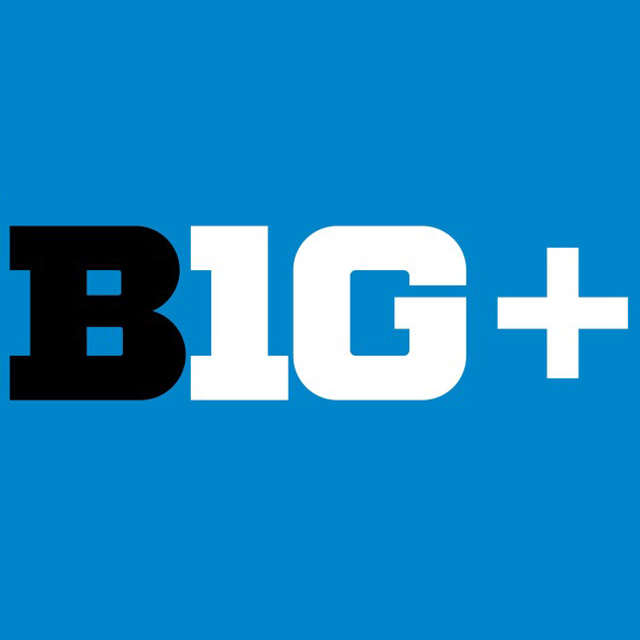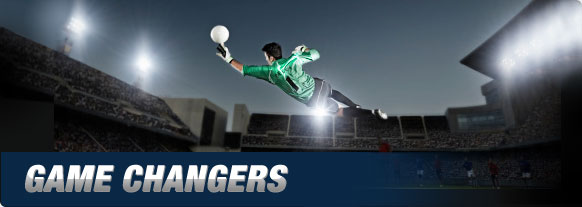BTN.com staff, November 30, 2014
A series that covers the true revolutionaries, Game Changers explores how innovators from Big Ten universities - students, faculty and alums - are inventing or reinventing their chosen fields.
You?ve probably never even heard of him, but chances are, Charlie Catlett has helped make your life easier and more livable. As a student at the University of Illinois and a member of the team that established U of I?s National Center for Supercomputing Applications (NCSA), he helped kick off a revolution in information technology.
An Illinoisan since the age of 16, Catlett said his interest in computing was kindled thanks in part to a programming course he took during his freshman year at Illinois.
?I got really excited about writing software to make electronic devices - computers - do things,? he said.
Catlett graduated from the university in 1983 with a bachelor?s degree in computer engineering, but he didn?t have to go far to find interesting, meaningful work in his field.
?Shortly after graduating in 1983, I became interested in the Internet and installed the first local area network as part of my first job, at the Army Corps of Engineers Construction Engineering Research Lab in Champaign,? Catlett said. ?In August 1985, I saw a picture of a Cray supercomputer being delivered to campus. A month or two later, I was one of the first three-dozen employees at NCSA.?
As part of the NCSA team, Catlett participated in the design, deployment and evolution of NSFNET (National Science Foundation Network) - one of the early networks that evolved into today?s Internet. He also was there when Mosaic, the first Web browser, was born.
In 1992, Catlett co-authored a seminal paper in 1992 titled ?Metacomputing.? That played a major role in developing the concept of grid computing, defined as the collection of varied resources stored on a multitude of computers (often geographically dispersed) toward a single objective.
?Throughout the 80s and 90s, the use of high-performance computing was pretty unique in industry,? said Catlett, went on to become co-founder the Open Grid Forum, and served as chair of that organization from 2000 to 2010. ?We worked with various industries to bring them into the world of high-performance computing. It started with the pharmaceutical companies and the manufacturing companies in the 80s, and in the 90s, it was the service sector. That?s where this big data stuff began, with the service sector.?
Catlett hasn?t stopped thinking about big data since. And he?s held a variety of positions that have helped put him at the vanguard of this movement. He was the chief information officer at the Argonne National Laboratory in Lemont, Ill., from 2007 to 2011. (Today, he?s a senior computer scientist at Argonne.) He?s also served as a senior fellow at the University of Chicago Computation Institute since 2000, and been part of the U of C?s Urban Center for Computation and Data.
In those roles, he?s contemplated how he could use complex configurations of wide-ranging sets of information to make buildings work better.
?We were doing lots of work in wearable sensors and other kinds of injecting IT into buildings to do a better job of, say, managing the energy in the building,? he said. ?I started to spend time with people in the city of Chicago to try to understand the challenges that major cities are facing and whether there might be opportunities to bring computing and data analytics to bear those challenges.?
About a year ago, Catlett and Brett Goldstein, former chief information officer for the city of Chicago, set out to build a platform that would bring facts and figures in from open data portals and present it to academics in other fields through a map.
For example, if a sociologist wants to look at economic development and crime over a five-year period in a particular neighborhood, ?we can tell her all the data that?s available, and she can choose and refine from that,? Catlett said. Other issues might include how air quality affect afflictions such as asthma or why air quality is even an issue downtown during certain days or in certain weather conditions.
Thus, Catlett?s Array of Things was born. The project is a partnership with the city to create a network of interactive, modular sensor boxes around Chicago that collect real-time data in areas like environment, infrastructure and pedestrian traffic - all open-source for research and public use.
?Our objective is to do things in Chicago that prove to be useful, and for those that prove to be useful, we want to work on with other cities to help them do something similar,? he said.
[btn-post-package]That would be more than enough to keep most people preoccupied, but most people aren?t Catlett. An avid drummer, he?s also a visiting artist at the School of the Art Institute of Chicago.
Additionally, he?s ?very into? his family, which also has its roots in the University of Illinois. Catlett met his wife, Joanie (B.S., education, 1981) through his involvement in the campus ministry, known today as Illini Life. Today, he has three grown children, and come late-December, he?ll add yet another title to his bio: grandpa.
?I?m getting a grandson for Christmas,? he said.
By Elisabeth Lisican







 WATCH LIVE: Select Spring Football, lacrosse quarterfinals, tennis championships and more.
WATCH LIVE: Select Spring Football, lacrosse quarterfinals, tennis championships and more. 
